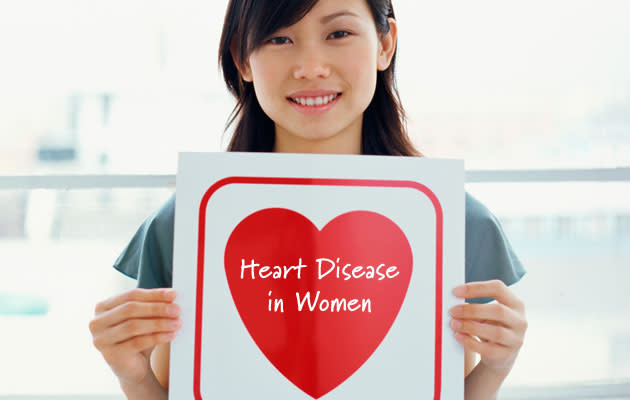 Fit to Post Health
Fit to Post HealthHeart attack symptoms different, deadlier in women

Heart disease doesn't happen primarily to men.
The truth is, cardiovascular disease is the leading cause of death in women too, and female patients, particularly young women, have a worse outlook from heart attacks than their male counterparts.
However, men and women experience cardiovascular disease in different ways, with women exhibiting fewer common symptoms and responding to treatment in a different way. Women may also experience a different kind of heart disease that affects heart muscle or the small blood vessels that supply the heart.
Symptoms of a heart attack
For both men and women, the most common symptom of a heart attack is chest pain or discomfort, described as an achy, tight or "heavy" feeling.
However, a new study featured in the Journal of the American Medical Association in February 2012, found that women are more likely than men to have heart attacks that present without chest pains, and they are more likely to die of a heart attack than men.
Related article: 10 super foods to protect your heart
Women are more likely than men to experience other signs of a heart attack. These include:
shortness of breath
nausea
feeling faint
breaking out in a cold sweat
pain in the arms, back, neck, jaw or stomach.
They may also have less common signs of a heart attack, such as:
heartburn
feeling tired
a cough
"heart flutters"
Women may sometimes discount these clues, as they don't "feel" like a heart attack. However, it is important that these warning signs are not ignored and that a doctor be consulted immediately.
Am I at risk of heart disease?
When it comes to cardiovascular disease, women have some inherent risk factors. These include:
Age: Risk increases with age, especially after menopause.
Family: The risk is higher if a direct family member develops heart disease before 55 years for male relatives, or 65 years for female relatives.
Gender: Women usually experience heart attacks a decade or so later in life than men, and are more likely to die from them.
Ethnicity: In Singapore, ethnic differences in heart disease exist, with higher heart attack rates among Indians and a higher risk of dying from a heart attack among Malays.
Other risk factors, which are the same for males and females, can be managed with lifestyle modifications and medications. They include:
Smoking — Smoking increases the risk of a heart attack by two to three times; it causes more plaque to form and become unstable.
Diabetes
Cholesterol — High levels of LDL ("bad") cholesterol or low levels of HDL ("good") cholesterol increase the risk of coronary disease.
Hypertension
Obesity — Being overweight increases the levels of LDL cholesterol.
Related article: Young, slim… and hiding high cholesterol?
Diagnosis and treatment
Women should go for regular screenings to check for potential risk factors such as diabetes, abnormal cholesterol levels or high blood pressure.
Tests such as an electrocardiogram; cardiac stress test which can include an ultrasound or nuclear imaging test; computed tomography (CT scan); and a coronary angiogram may be carried out to detect heart disease.
Patients who are diagnosed with heart disease will be recommended to take medication to relieve their symptoms and to reduce their risk of future heart attacks.
Those with more severe disease may have to undergo treatment to "unblock" their arteries either by placing metal stents ("spring-like" devices that act as "scaffolding") in their coronary arteries, or they may have to undergo coronary artery bypass grafting surgery (CABG).
Preventing heart disease
Heart disease is preventable, and women should take action to reduce their risk of heart disease by:
Exercising regularly
Not smoking
Eating healthily and maintaining a normal weight
Getting blood pressure and cholesterol levels checked
Controlling diabetes
Following the doctor's advice and taking medications regularly.
Related video: How to keep fit through exercise
These protective lifestyle factors have been shown to markedly decrease the risk of cardiovascular disease for women in Singapore. Women who already suffer from cardiovascular disease can lower their risk of having a heart attack by up to 80 per cent by leading a healthy lifestyle.
This article has been contributed by Dr Stanley Chia, Senior Consultant, Department of Cardiology, National Heart Centre Singapore.
Find more health-related tips and articles on HealthXchange.com.sg, Singapore's trusted health and lifestyle portal.
Health Xchange's articles are meant for informational purposes only and cannot replace professional surgical, medical or health advice, examination, diagnosis, or treatment.

